Upon the 2014 death of Richard Mellon Scaife, a billionaire heir of the Mellon fortune, it was announced that his collection would split into two Pennsylvania museums – Brandywine Conservancy and Museum of Art and the Westmoreland Museum of American Art.
Scaife’s taste in art may be as conservative as many of his political views. The underpinning of the collection is the 19th and 20th-century American landscape paintings such as those by Heade, Kensett, Bierstadt, and Inness. But his affinity to Western Pennsylvania was evident in the collection too. Eight paintings by Pittsburgh artist John Kane were designated to enter the Westmoreland Museum of American Art, which blends a national narrative with a regional (Southwestern Pennsylvania) focus.
Like other famous collections, not every piece is museum-quality, but still desirable. Freeman’s auctioned some of the remains of his collection on Feb 13, 2019.
Lot 489 by Eugene Poole features a small woodland study. Poole had an unwavering fondness for Western Pennsylvania’s fall. His large canvases are often executed with tight control and exactness. This study, probably plein air, looks charming and relaxed.
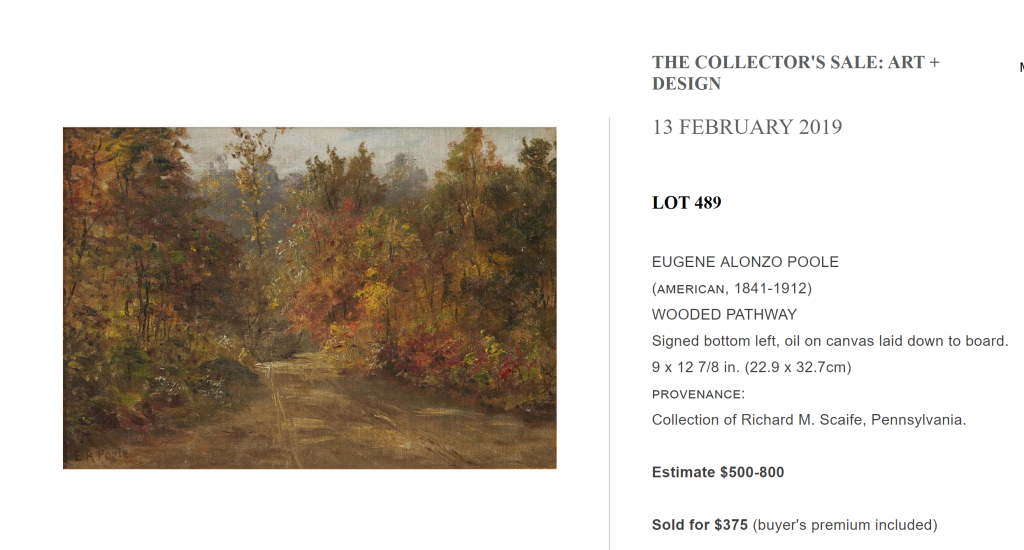
Lot 497 by Christian Walter is another study. Walter remained loyal to his native city of Pittsburgh during his lifetime. He even commented, “It is a mistake for artists of this district to leave the environs of Pittsburgh to seek material for landscape painting. To my mind, no other place in the world has the wealth of material that can be found here at home”.
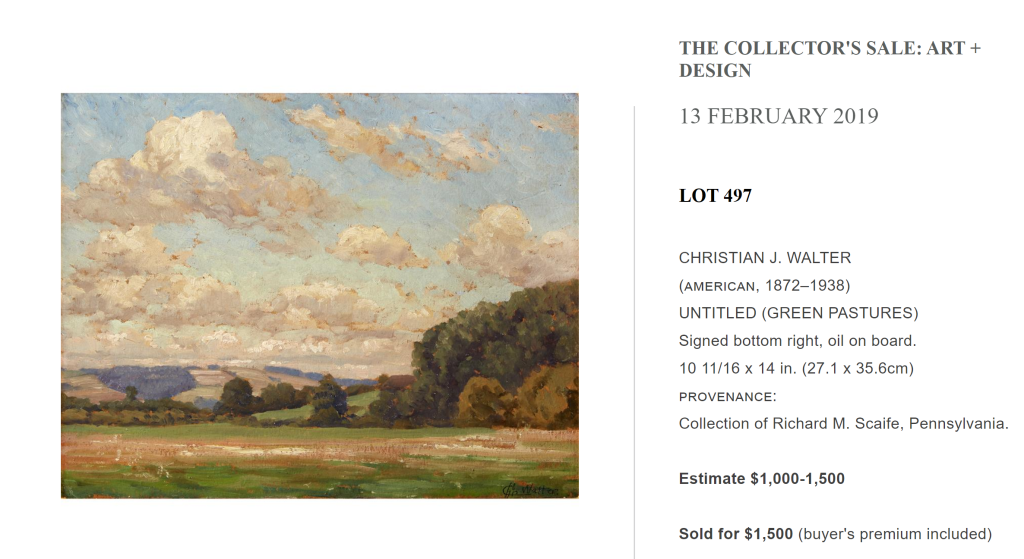
The surprise came from Lot 480 by Robert Jordan. Titled “After Supper,” the large painting reduces an expansive vista into light and dark muted hues. The silhouetted tree in the forefront looks nostalgic, while the minimalist bands of hills at dusk lean towards modernity. A mysterious woman, walking with a black dog, is barely discernible in the middle ground. Estimated around $1,000, the painting was sold for $6,250, including the buyer’s premium.
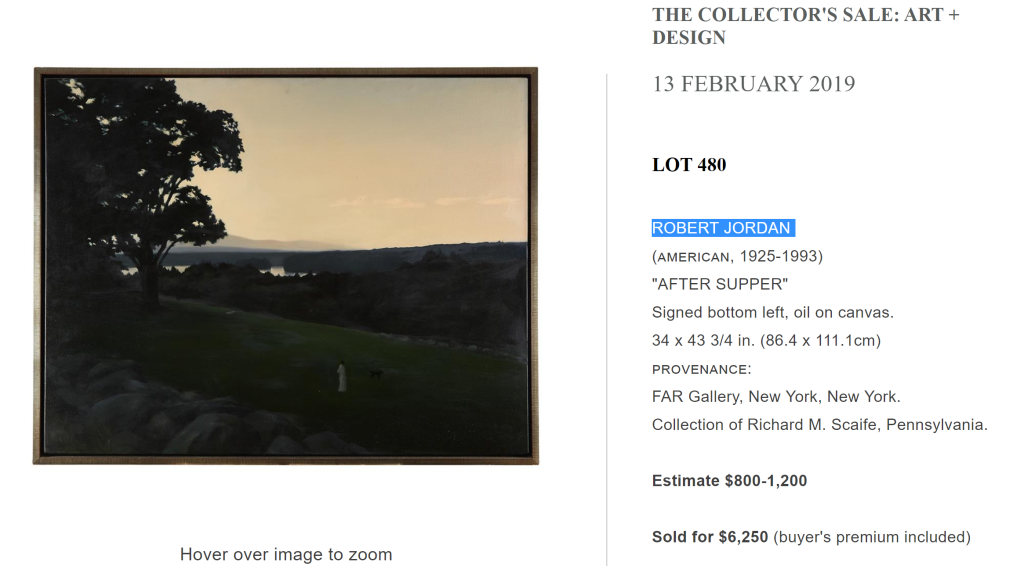
The most intriguing painting goes to an unsigned portrait, attributed by Freeman’s to Martin B. Leisser, another Pittsburgh painter. Although Leisser was one of the Scalp Level School painters, his versatile color palette suited him well in more than wooded lands, a central theme for other fellow artists like George Hetzel or Charles Linford. Leisser was influential in convincing Andrew Carnegie to create an art school for the Carnegie Institute.
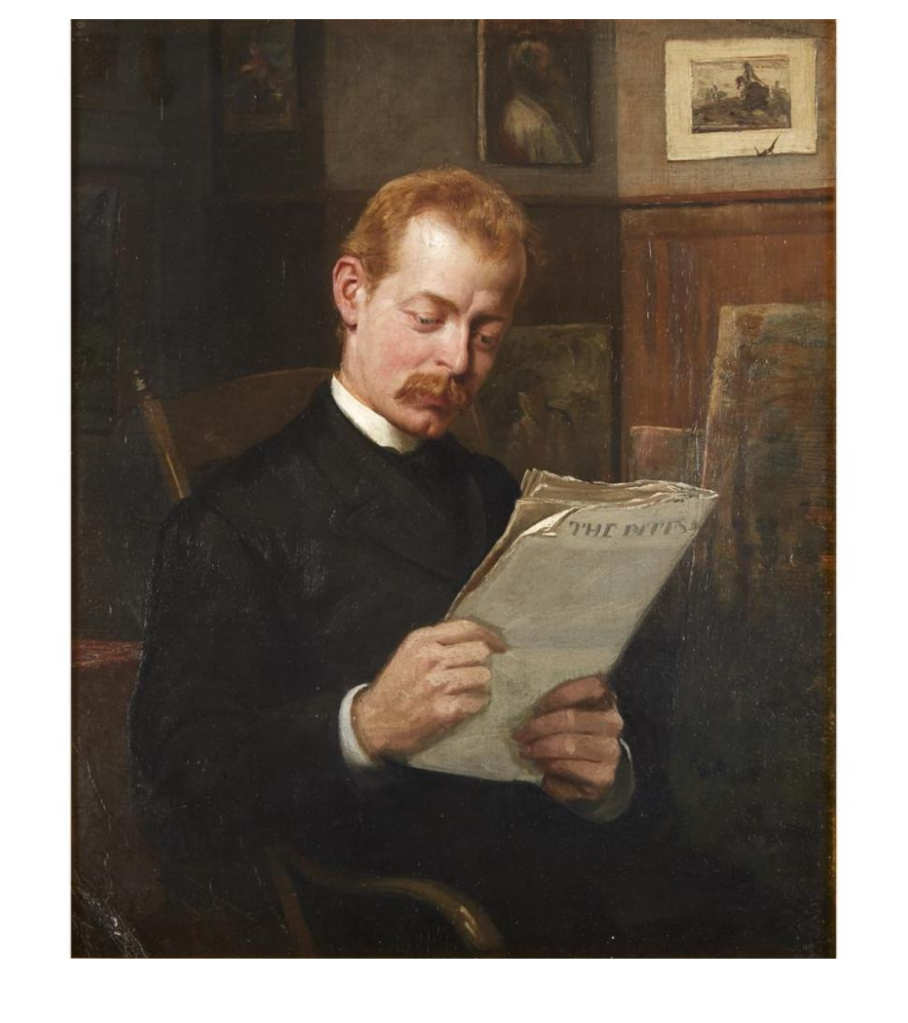
The attribution is unclear, and in this case, less important. The subject is a bearded man, probably in his 30’s or early 40’s, in a well-decorated room, reading a newspaper titled “THE PITTS…”. We can probably safely assume it’s The Pittsburgh Press. While I cannot confirm, the sitter’s countenance leads me to the owner of that newspaper, Roy W. Howard.

Roy Howard became the president of E. W. Scripps Company and the United Press in 1922, which owned The Pittsburgh Press subsequently. For a long period, the Press was a major afternoon daily newspaper in Pittsburgh. Howard, born in 1883, would be around 40 when his company acquired the Press.
Scaife was a newspaperman. He bought Greesburg’s Tribune-Review in 1970. According to one of the newspaper’s editors Frank Craig, Scaife loved newspapering more than anyone he’d known. In 1992 Scaife founded the Pittsburgh Tribune-Review after the Scripps-Howard chain rejected his bid to buy the strike-bound Pittsburgh Press. By that time Howard had been gone for more than two decades.
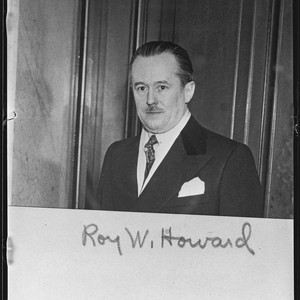
It could be that this painting reminded libertarian-leaning Scaife of his ambition to own a newspaper so that he could “give people a choice with ideas and what’s best for this country.”
Ideological bias in the disguise of ideas is not uncommon nowadays, in both conservative and liberal news outlets. Yet, Howard had a different set of views. Even as the head of the company, he still worked as a reporter. (In 1936, he interviewed Joseph Stalin at the Kremlin).
In Howard’s own words, journalism’s mission is to grant “readers the fullest possible access to the truth and the greatest possible divergence of viewpoint.”
I wondered if Scaife knew of Howard’s words when he looked up this figure in a painting reading the paper he couldn’t own.
Discover more from Urban Art & Antiques
Subscribe to get the latest posts sent to your email.

